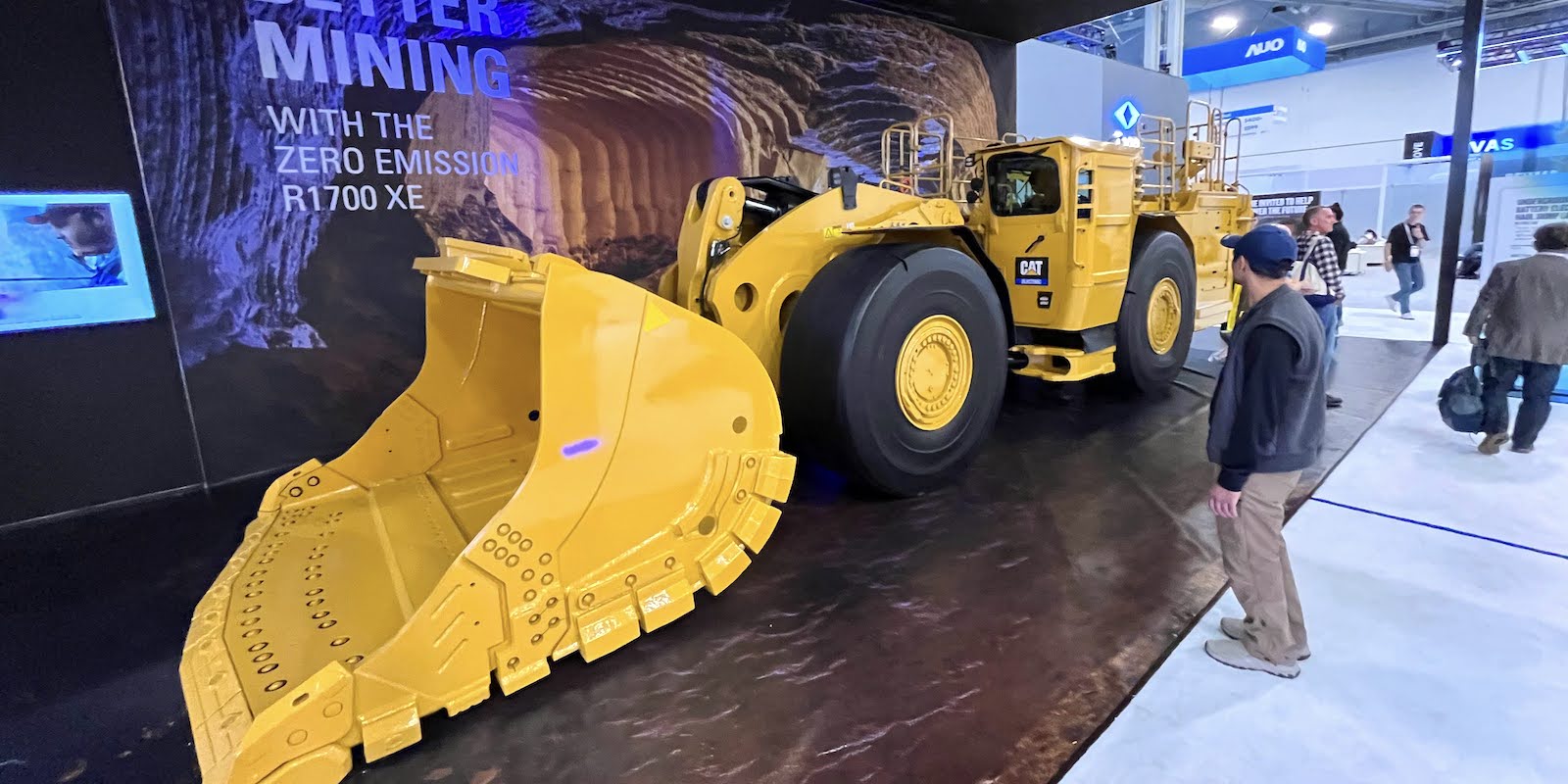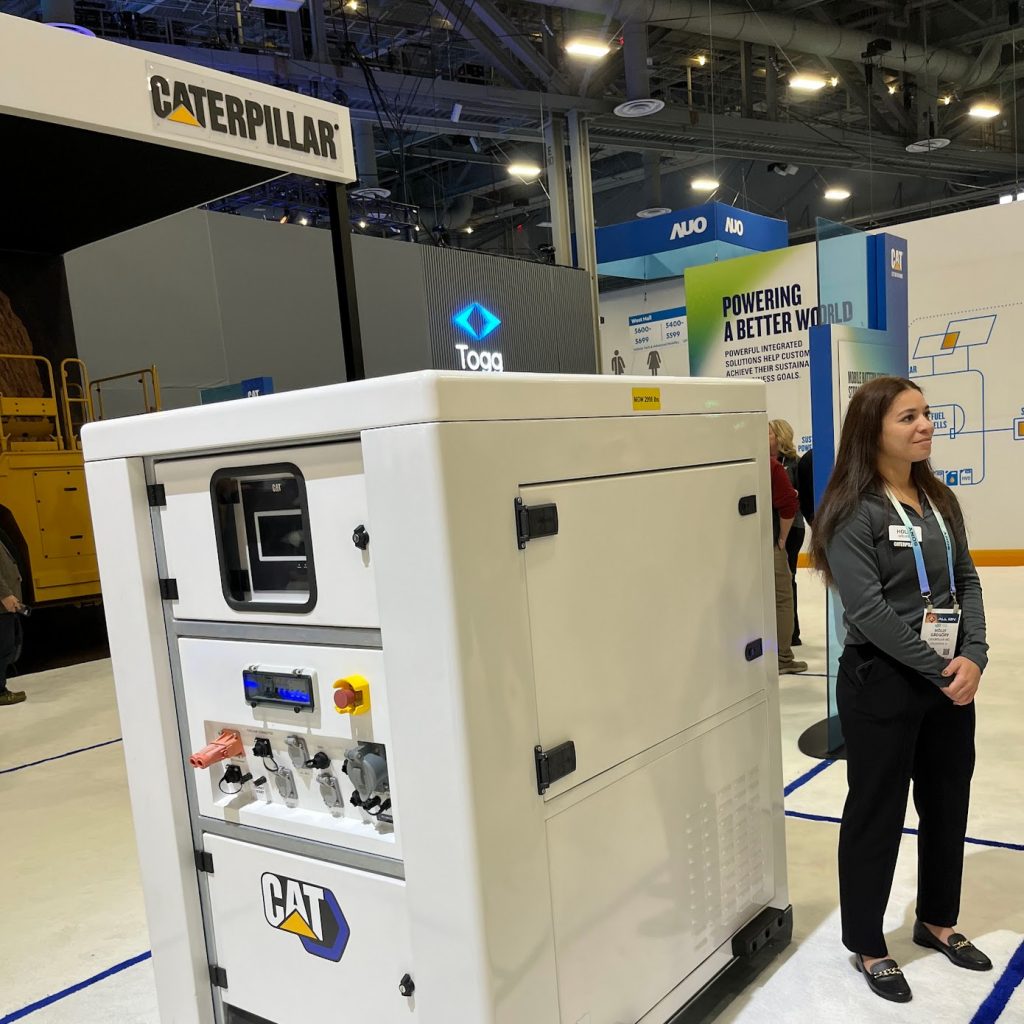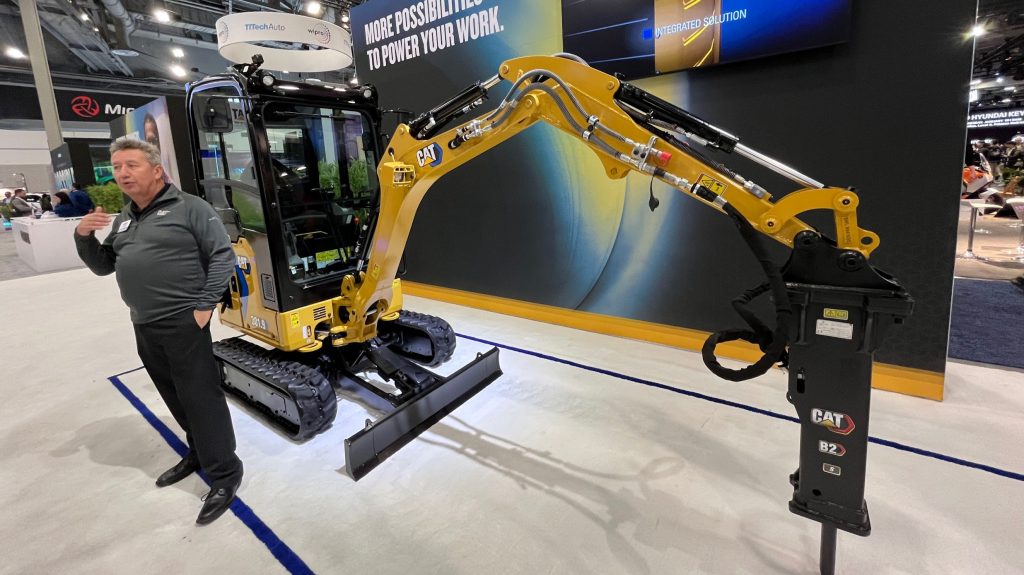
Caterpillar turned the heads of CES attendees with a monstrous, all-electric underground mining loader – but the real game-changer wasn’t the big mining rig, or even the electric excavator. Instead, it was Cat’s cutting-edge energy management systems to keep electric equipment charged up and ready to work.
“We are thrilled to return to CES to showcase our advancements in energy solutions. This event is renowned as the proving ground for breakthrough technologies and global innovators, making it the ideal place for us to demonstrate our leadership in power systems and integrated service solutions, which help our customers in the energy transition,” said Rod Shurman, senior vice president of Caterpillar’s Electrification + Energy Solutions Division.
To that end, Caterpillar showcased a number of on-site generators capable of generating electric power to store in its battery energy storage system (BESS). Caterpillar says its BESS is designed for rapid plug-and-play installation and integration, compatible with any combination of diesel, natural gas, or renewable energy sources.
Granted, fuel-agnostic energy storage is something most BESS products are capable of – but the concept of using on-site batteries for EV charging is still new enough that it might still be news to Cat’s customers. In fairness, Cat’s big BESS offers a comprehensive array of charging ports, making it compatible with almost any EV, charging it in about 20-40 minutes.

Caterpillar also showcased several smaller DC chargers designed to be compact enough for a single worker to wheel up to a piece of electric equipment and charge it with electrons in about three hours.
Speaking of electric equipment, Caterpillar also brought out an electric drive mini excavator fitted with a jackhammer implement meant to show fleet buyers that their legacy Cat accessories would still work once they made the transition to electric – but note: Cat’s excavator isn’t fully electric.
Cat 301.9 electric mini excavator

Unlike the fully-electric equipment concepts shown by Doosan Bobcat and HD Hyundai, which use electric actuators and gears to move their boom arms, the Cat 301.9 uses an electric motor to power its wheels and accessories, but still relies on conventional hydraulic oils to manipulate its arm – and that can be a problem in cold climates.
“The electric motors don’t make as much heat as the diesels,” explained “Greg,” one the Caterpillar SMEs on the ground at CES2024. “So it can take a long time to warm up the hydraulics.”
This might seem like a rookie mistake, but Greg clarified, “These are still really new. The first two or three I drove were converted diesel units. This is one of the first ones that was built electric from the start.”
To Caterpillar’s credit, sticking to hydraulic operation will make it easier for operators familiar with Cats to switch to electric. The fact that the hydraulic accessories fleet operators already own will work with the new electric 301.9 also helps lower the EV’s barrier to entry.
The 301.9 mini excavator was displayed alongside its 48 volt on-board battery pack, which offers a total capacity of 32 kWh and delivers 3 hours’ of continuous runtime – which is just enough to handle a full working shift above ground.
Below ground, you’ll want something a little bigger.
Cat R1700 XE LHD underground loader

The crown jewel of Caterpillar’s CES exhibit this year was the massive Cat R1700 XE LHD underground loader. The R1700 XE LHD offers a whopping 16.5-ton payload and a top speed just over 11 mph – a nightmare-fast speed in the tight confines of a dark underground mine, the loader’s natural habitat.
The good news is that you won’t have your lungs getting choked out by diesel fumes while you try to escape from the big Cat, because this is the only underground loader in the industry powered by onboard battery that can charge in less than 20 minutes when it’s hooked up to two of the big Cat MEC500 chargers we talked about at the beginning of this article.
This is the first of this type of Cat battery packs, which the company claims are a modular design that will power future electric equipment models, as well as with factory integrated telematics and a structure durable to endure the challenges of the job site.
Electrek’s Take
Caterpillar isn’t the only heavy equipment OEM hard at work developing a total job site solution to keep its new EVs charged up – but it did a fantastic job convincing people at CES that they were, and I wanted one of the bright blue CAT trucker caps badly enough not to say anything about it to their face.
That said, I got the chance to have Volvo Penta’s Darren Tasker as a guest on The Heavy Equipment Podcast to talk about Volvo Penta’s efforts to bring more sustainable, lower emission energy to remote job sites. Trust that other companies in the space, surely, are doing the same.
FTC: We use income earning auto affiliate links. More.

Comments